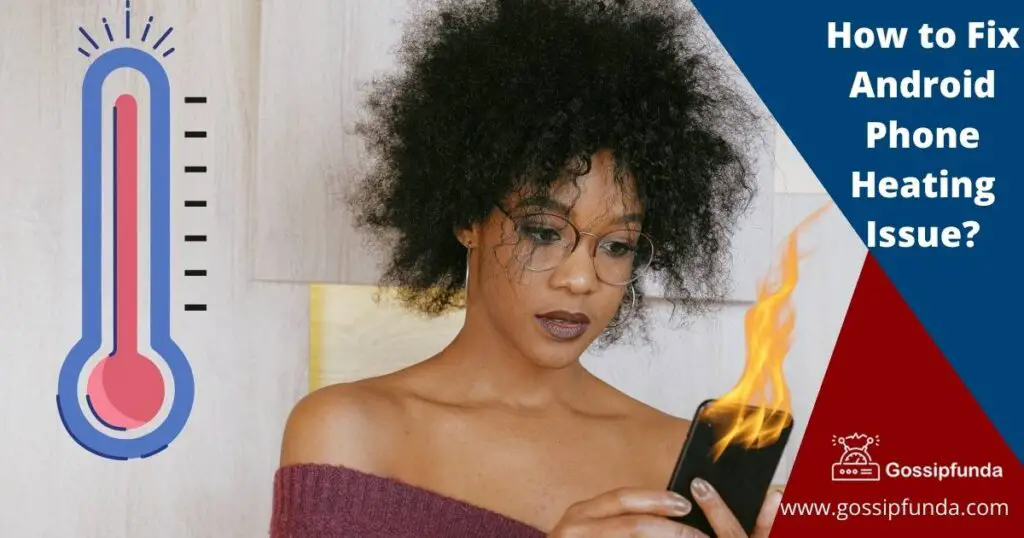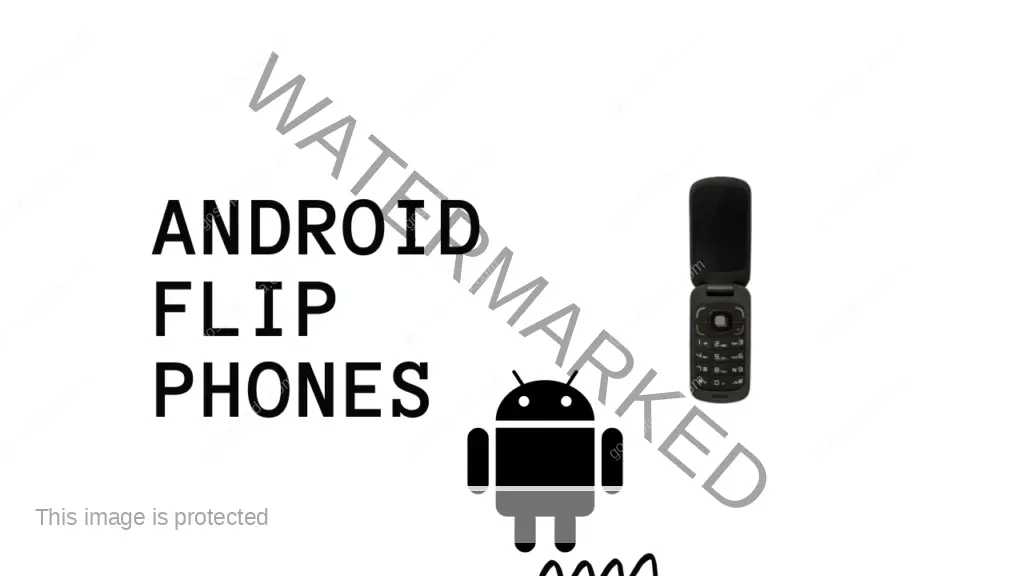Most of us have had an overly heated smartphone, especially one that was radiating warmth after a particularly lengthy call. What, on the other hand, are some of the other reasons why our smartphones get very hot? It can get so hot that it will not even work till it cools down? How to Fix Android Phone Heating Issue?
“What is causing my phone to be so hot?” you might wonder. Well, there’s heat where there’s energy. When you switch on your mobile phone, innumerable electrons go through its computer circuits, allowing the camera, applications, games, and phone calls to function. Overheating your smartphone can result in a lot of problems for your smartphone. Some of the problems which are caused by overheating of your smartphone are as follows:
- Fast draining of your phone’s battery
- Reduce the efficiency of your smartphone drastically
- Reduce the durability of the device
- Reduce the performance of the smartphone
- Shorten the phone’s life span
- Cause damage to the CPU of the smart phone by melting the Central Processing Unit’s components
- The worst that can happen due to overheating of your smartphone is that it might happen to explode

What should the temperature of my phone be?
When charging, completing operations, or resting idle, maintain your smartphone b/w 32-95°F or 0-35°C, according to smartphone makers. If you frequently play games or watch a lot of online videos, or cast your device’s screen for several hours, or if you’re syncing a large number of files to the cloud, recovering from backup, or utilizing graphics-intensive or AR applications or features, while also using your phone to do various other tasks, it may get hotter than that.
Regretfully, there seems to be no simple way to monitor the interior temperature of your gadget. This information used to be presented within the settings screens on some phones, but it is not usually the norm. Alternatively, you need to have third-party software to get a reliable glimpse at your phone’s internal workings. Consider trying AIDA64 as well as Cooling Master, both of which perform well in this situation. On one hand, AIDA64 will show you practically all you need to learn regarding your smartphone, Cooling Master is developed to identify and control overheating in phones by preventing the applications that are throttling it. Another interesting tool is CPU-Z, which is programmed to recognize CPU overheating.
Do not miss:
Why is my phone hot?
Sadly, there is no common solution that works for everyone for this problem. It’s important to take a moment to consider what’s hot and what isn’t prior to actually moving on. Under normal circumstances, your phone should not be hot. If that’s the case, you’ve got a problem. However, if the phone is just warm, it should not be understood or taken as hot. There is a difference between hot and warm. While you are playing games on your device, it is obvious that the phone will get slightly warm and that’s completely fine. However, if your smartphone shows an overheating warning or feels unusually extremely hot, you should look into it. Before you blame your device’s overheating problems on a “faulty battery,” think about the ones that follow:
- You’ve been playing movies or running games a lot, and you’re wondering why your phone is so hot. The CPU on your phone is taxed when you watch movies or play games for lengthy periods of time. If you’re playing while your phone is charging, it might get hot and limit battery life.
- You have several applications open at the same time. Each background application (also known as “background applications”) uses your device’s cpu, RAM, and battery. A higher amount of energy is consumed, if you have more apps. App updates frequently solve software problems that might cause your device’s overall performance to suffer, so make sure to keep your applications up to date to avoid this.
- There’s a problem with your signal. Whether it’s cellular, WiFi, or Bluetooth, your phone is continuously searching for a signal. When you’re in an area where there’s no WiFi or a weak cellular connection, your phone goes into overdrive, pouring extra power in to it’s antenna.
- The smartphone is being exposed to the sun. Did you set the device on a bright ledge? Are you stuck inside a hot vehicle? On your rear porch’s concrete stairs? You definitely didn’t do it on purpose but keeping your smartphone in a heated environment may transform the metal and glass parts into a little furnace, baking the fragile computer parts within.
How to cool down your phone?
- If your phone starts to overheat, consider removing the protective cover, turning on low-power mode, or placing it in a shaded spot to cool it off.
- Switching off Gprs, Bluetooth, and WiFi and reducing the phone’s brightness
- Switching on airplane mode
- Stop doing chores that need a lot of processing power. That implies you should turn off your streaming video applications and put down your phone. For instance, if the phone became unusually heated while viewing Netflix, shut the video platform to relieve the processor’s strain.
- Remove your phone from direct sunlight if possible. When a phone is in a hot automobile with the sun pounding down straight through the windshield, it frequently overheats. Move it to a shaded portion of the car if feasible. However, do not place the phone in your pocket or a large backpack, since this may trap the heat and prevent it from dissipating.
- Plug out the charger from your Smartphone if you’re doing anything that requires a lot of processing power. The battery warms up as you charge your phone. Playing games causes the Processor and other parts to become hot. Adding both of them might result in a scorching android phone.
- Make sure your applications are updated. Updating is a fancy way of saying “optimise.” The more efficient the application is, the lesser resources it consumes, that means it’s less likely to overheat your phone.
- The charging cable should be changed. A defective wall charger might occasionally cause the charging device to malfunction. If the heat is largely focused at the cable port, you may want to try a different cable.
- Shut off your Android phone as soon as possible. Normally, you may achieve it by having to press the power switch on the device’s side, then touching the screen to indicate you wish to turn it off.
How to prevent the phone from overheating in the first place?
When it comes to fix android phone heating issue, prevention is better than cure. Except when your phone is overheating due to a hardware/software issue, you must be able to keep it from overheating. These simple tips can help you increase the lifespan of your smartphone and battery while also keeping it from getting too hot.
- Don’t exceed your phone battery’s charge more than 80%: To begin, keep your phone charged overnight on a cold, smooth surface instead of a couch or bedsheet. But, you should not be putting your phone to charge till it is 100% anyhow – doing so frequently can diminish the battery’s lifespan. When your phone is fully charged, it is more prone to overheat, so recharge it when it falls below 30 percent and unplug it when it reaches 80 percent.
- Use the appropriate adapter. Adapters and charging cords come in a variety of wattages, and several smartphone chargers are brand-specific. Third-party makers’ wires and cables should be avoided at all costs. Choose those created by the company that makes your phone. Rather than a cushy, insulated material like a sofa or bed, connect your smartphone on a firm, smooth surface like your tabletop. A wireless charger, which charges more gradually over time, may be a suitable alternative.
- Clean out the junk from your device: Remove any programmes that you aren’t utilising. Uninstall the ones you don’t use anymore and, if necessary, update the ones that you would like to keep. To reduce the brightness of the screen, change the settings on your smartphone.
- Turn down the phone’s brightness: dim the screen of your phone, especially if you’re using the phone outdoors. Buy in an anti-glare screenguard if you have trouble watching the screen with the brightness turned down.
- Install cleaning and monitoring apps on your smartphone. Cleaner programmes like Clean Master and Power Clean remove garbage data from your smartphone and detect applications that are affecting the operation of your phone or its battery. Consider installing antivirus software to prevent malicious software from attacking your phone and sucking its battery without your knowledge, which can lead to increased energy usage and excessive heating if not detected and handled.
- Close the apps which are not being used: When you have many applications active at the same moment (including opened web tabs), your device functions extra, so be in the practice of eliminating inactive apps on a regular basis. When charging your phone, close all apps (particularly graphics-intensive applications like games). Greenify is a popular app among Android users since it automatically hibernates idle apps and saves battery.
- Keep out of direct sunlight. This one sounds self-evident, yet we’re all easily distracted. Keeping your device with in shade and avoiding leaving that in a hot car or on a hot surface such as a heater or cooktop should be kept in mind.
- Keeping the installed apps in your device up to date: There might be a possibility that the version of any app installed on your device may be glitchy or not optimised well. There could be possibility that the version that’s installed on your device might have some bug or anything of that sort. Therefore, once the app is updated, the device will function better as the developers get aware of the bugs in a version and remove them in the next version.
- Use the Airplane Mode: Shut down your phone or set it on aeroplane mode if you’re hitting the beach or expecting to be outside for several hours. Why waste your phone’s battery life when you’re not using it?
- Ration the Bluetooth: Try and stop using Bluetooth for lengthy stretches of time, and ensure sure you’ve disconnected it once you’ve finished using it. If your device by default links to Bluetooth of your vehicle, turn it off, more importantly if you’re not going to have a conversation on the phone or listen to the radio.
- Check for viruses and malwares: If your phone continues to overheat, malware could be to blame. For example, the Loapi Android malware can take all of your processor’s CPU speed, burn up the battery, and permanently harm your device. It’s probable that your device seems to have a malware if it’s performing slower than usual, displaying pop-ups, and heating up even when not in use. If you download applications from the Play Store on a frequent basis, be sure they’re getting scanned. Select your user icon in Google Play. Search for the phrase No harmful apps found under Manage apps & device. (You can double-check by tapping that entry and manually scanning it.) Ensure Play Protect is turned on by tapping the options button on this page. Although this is a helpful technique, it will not fix all of your issues. Apps tainted with malicious software have discovered ways to get beyond the Play Store’s verification procedure. Whenever this occurs, Google will be able to stop the app, but individuals who have downloaded it will have to actively remove it. When 16 apps affected with Joker virus and another 21 apps affected with HiddenAds adware were identified in the Play Store, this is what happened. Many famous antivirus providers offer virus protection android applications, incorporate them as part of a multi-device membership, if you believe your phone has been exposed by virus or wish to avoid it. In this area, our selections include Bitdefender, Kaspersky, Norton, and McAfee.
Whether your Smartphone or iPhone is overheating, there’s almost always a straightforward cure. Smartphones cram a lot of energy and processing resources into a small space, and while the latest models are designed to survive everyday use and a wide variety of temperatures, none of them are resistant to heating. Recognize the causes of your phone’s overheating and take basic action to avoid it.
Interested in working in diverse backgrounds and having an interest in technology. An avid learner and super-ready to indulge in anything new on the cards. I keep myself busy with reading about topics of different fields whenever I have spare time. I believe one can and should break the stereotype to stay in their field of studies and should constantly thrive and be eager to explore other areas as well. Interested in offbeat traveling as well as photography.


